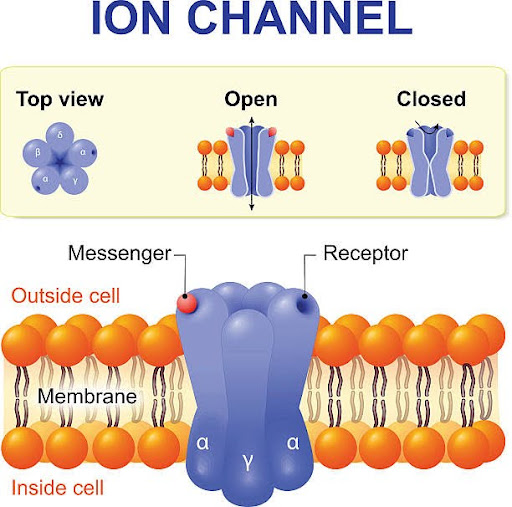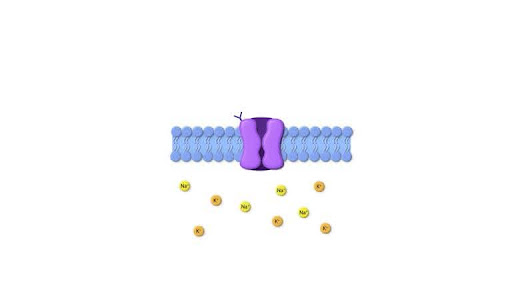Ion Channel Physiology: Understanding Their Role in Cellular Communication
In the vast landscape of cellular biology, ion channels play a central role in ensuring that cells function, communicate, and adapt to their environments. Because these structures are inside the membrane, they support the balance of types of ions in the cell by regulating their flow. From regulating heartbeat to enabling thoughts in the brain, ion channels physiology are fundamental to life. Exploring how organs work and how they communicate with each other helps science understand many diseases.
What Are Ion Channels?

Ion channels are specialized protein structures found in the lipid bilayer of cell membranes. These channels work by allowing sodium (Na+), potassium (K+), calcium (Ca++) and chloride (Cl—) ions to enter or leave a cell, thus controlling what’s in and what’s out of the cell. They function by screening the passing of some ions but not all. Being selective helps nerves and muscles produce electrical signals and keep the cells balanced.
Each type of ion channel has a specific role and is often activated by different stimuli, including changes in voltage, binding of a molecule, or mechanical stress. Gates inside the channels make sure that cell signaling exact in terms of timing and amounts.
Ion Channels and Resting Membrane Potential
A critical concept in ion channel physiology is the resting membrane potential, the electrical charge difference across the cell membrane when the cell is not actively transmitting a signal. This potential is largely established by the uneven distribution of potassium and sodium ions, facilitated by both ion channels and the sodium-potassium pump.
It is potassium channels that maintain a negative charge within the cell. Potassium ions moving out of the cell make the cell negatively charged which adds to the cell’s resting potential. The charged state in these cells changes constantly and must be maintained to keep nerve and muscle cells able to respond.
Role of Ion Channels in Action Potentials

One of the most fascinating functions of ion channels is their role in generating action potentials, the electrical impulses that allow neurons and muscle cells to communicate. A stimulated neuron causes the fast opening of sodium channels that let sodium enter the cell rapidly. It leads to the membrane becoming much less polarized. Virtually right away, potassium channels that react to voltage open, helping potassium ions to leave the cell, repolarize it and restore the membrane to its resting condition.
This orchestrated opening and closing of ion channels underlie every nerve impulse in the human body, from thought processes to muscle contractions. Because dendrite axon bundles react very fast and efficiently, our brains quickly respond to new information.
Types of Ion Channels and Their Functions
Ion channels can be categorized based on their gating mechanism and the ions they transport. Voltage-gated ion channels open or close in response to changes in the membrane potential, and they are heavily involved in the generation of action potentials. Sodium, potassium, calcium and chloride channels are all known as ion channels.
Ligand-gated ion channels, on the other hand, respond to chemical signals such as neurotransmitters. As soon as a ligand holds onto these channels, they can open to let specific ions cross the membrane. Synaptic transmission which is conversation between neurons at synapses, relies on these channels.
There are also mechanically-gated ion channels, which respond to physical deformation such as stretch or pressure. Such channels play an important role in hearing and touch.
The Mechanisms of Calcium Channels and Essential Signaling
Among all ion channels, calcium channels deserve special attention due to their pivotal role in intracellular signaling. Calcium ions transmission is involved in several cellular events, for example muscle contraction, sending messages from one nerve to another and gene expression. An influx of calcium into the cytoplasm following calcium channel opening can set off a series of signals changing the cell’s behavior and function.
Both quick reactions in cells and lasting changes in the body depend on the calcium homeostasis maintained by these channels. Problems in calcium signaling are linked to heart arrhythmias, diseases of the nervous system and cancer.
Ion Channels in Disease and Therapy
Given their critical roles in cellular physiology, it is no surprise that malfunctioning ion channels are implicated in various diseases—collectively referred to as channelopathies. Some examples are epilepsy, cystic fibrosis, periodic paralysis and various kinds of migraines. Mutations in genes encoding ion channel proteins can alter their function, leading to impaired ion flow and abnormal cellular activity.
Because of their importance, ion channels are also a major focus in pharmaceutical development. Many drugs aim to target specific ion channels to modulate their function. For example, calcium channel blockers help in treating both hypertension and heart problems and sodium channel blockers often control seizures in people with epilepsy.
Moreover, the advancement of precision medicine and molecular diagnostics has enabled the identification of specific ion channel mutations, leading to personalized treatment strategies that address the root cause of a patient’s condition.
Ion Channels and Technological Innovations
Beyond medicine, the study of ion channels has inspired technological innovations in fields such as bioelectronics and nanotechnology. Ion channel-based biosensors are being developed for detecting toxins, monitoring physiological changes, and even interfacing with neural tissue in brain-computer interfaces.
The biophysical modeling of ion channel behavior also aids in the design of new materials and devices that mimic biological systems. These developments underscore how a deeper understanding of ion channel physiology can influence both biomedical and engineering disciplines.
Conclusion
Ion channels are at the heart of cellular communication, bridging the physical and chemical aspects of life at the molecular level. Thanks to how they work, channels are essential for a lot of biological functions. From enabling neurons to fire to ensuring the rhythmic contraction of the heart, ion channels are vital for maintaining life as we know it.
Our knowledge about these molecular gatekeepers is expanding, so it is likely that new therapeutic technologies and effective tools for early detection will also improve. Whether you are a student of biology, a healthcare professional, or simply curious about how the body functions, appreciating the role of ion channels opens a window into the elegant machinery of life.









